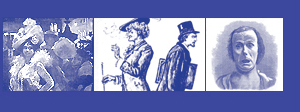Madness
Author :
Title : Considerations on the Moral Management of the Insane (1817)
Keywords:restraint, evil passions, cure, recovery, impulse.
Pages : Introduction | page 1
Introduction
John Haslam (1764-1844) was the resident apothecary to Bethlem Hospital between 1795 and 1816. From this excerpt, taken from V. Skultans (ed.), Madness and Morals: Ideas on Insanity in the Nineteenth Century (London, 1975), it is clear that Haslam was a forceful supporter of restraint. In contrast to the Tukes’ judicious use of fear at the Retreat, Haslam did not hesitate to promote restraint, arguing for its centrality in quelling the passions and so curing lunacy. He was known for employing a range of implements and devices while at Bethlem. One, which enabled force-feeding of the patient, came to be known as Haslam’s ‘key’. Though both Philippe Pinel and William Tuke admired his work, Haslam suffered a dramatic fall from grace when the Governors of Bethlem were forced to dismiss him from his post in 1815 after revelations of cruelties and malpractice. The scandal reached Parliament and Haslam was asked to testify in Select Committee hearings in the spring of 1815. Further abuses at Bethlem were exposed in 1827. His career in ruins, he died in 1844. As a direct result of the abuses discovered at Bethlem under Haslam’s care, the lunacy reformers passed legislation which was to transform the care and treatment of the mad in nineteenth century England. The Lunatics Act of 1845 required for the first time that all counties and principal boroughs of England and Wales make provision for the care of lunatics. This Act made the inspection of all private asylums compulsory, and established a permanent Lunacy Commission.
Back to Madness Documents | Introduction | page 1

